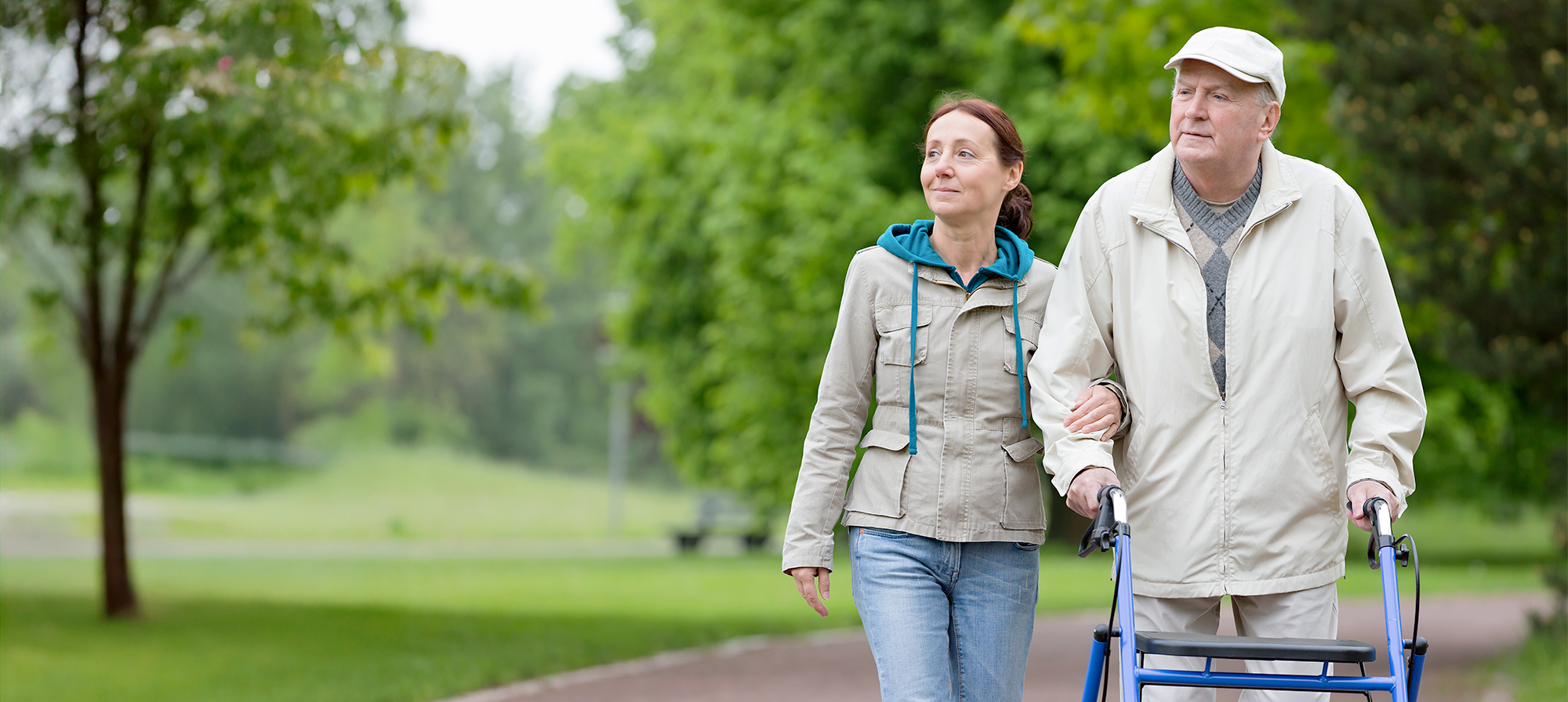Rob recalls that fateful day. “I’m jogging on the Memorial Drive running path in Cambridge, Massachusetts, next to the Charles River, and the next thing I know, I wake up in the hospital with a breathing tube down my throat. After thrashing around, I told myself, you’re going to have to calm down if you want this tube removed.”
An exemplary athlete who ran nearly every day, Rob collapsed during his routine run. The healthy 65-year-old couldn’t grasp that he had fallen on the pavement and likely broken his nose. He later didn’t remember the woman who sat with him, or the woman who called 911, or that several others were on hand to help. The helpers even included a doctor who stayed with him until the ambulance arrived. It was obvious to all that this unidentified man desperately needed medical care.
The emergency room
Rob was unconscious, and no one yet knew the cause of his collapse. Paramedics rushed him to Beth Israel Hospital emergency room, where he was admitted under the name John Doe. Hospital staff performed a series of tests and intubated Rob due to his agitation. They scanned, X-rayed, and measured parts of his body to determine if anything was broken.
Meanwhile, his family frantically searched for him. His wife, thinking it highly unusual he didn’t return home on time, phoned the local police department, who directed her to the state police, as that side of the Charles was in its jurisdiction. “I got two John Does,” the officer said. “Does your husband wear two wedding rings?” Yes, he does! She and her 3 children rushed to the hospital.
Covid dictated that only two family members could enter the emergency room at once. She went in with her eldest daughter. She was shocked to witness her unconscious husband thrashing on the table with a ventilator tube down his throat.
“We wanted to offer him comfort, but I’ve got to say, there wasn’t anything we could do,” she recalled. “We felt so helpless.”
They waited at the hospital until Rob was placed in a room and then left for the day.

Day 2
The cardiologist’s best determination was that Rob had suffered a heart event, most likely a heart attack, as blood flow through his arteries was blocked.
“Looking back on it now,” Rob says, “I know I could have died that day. I had a widowmaker heart attack.” A widowmaker occurs when there is a full blockage in the heart’s biggest artery, the left anterior descending artery. The rate of survival for a widowmaker is only 12 percent. Yet somehow, he had survived.
Later that day Rob was sent to the cardiac catheterization lab to evaluate his heart function. There they inserted a small tube into a blood vessel in his groin. It then traveled to his coronary arteries. Any problem in the arteries would show up and doctors could discover its extent. If they found a blockage, they could place a stent to open the blocked artery.
But the tests indicated that Rob’s blockage happened at the “Y” junction where the right coronary artery makes its first branch in a network of vessels. This required open-heart surgery: a coronary artery bypass graft, or CABG, surgery.
The first successful clinical CABG operation was performed in 1961 but was a complicated and risky procedure. Although an important step forward, the surgery did not pick up followers and fell into disuse. But today, CABG is likely responsible for saving more lives than any other type of procedure in the world.

CABG day
Rob holds only vague recollections of surgery prep. “It’s all pretty fuzzy. It was cold in the basement. I think they asked me to sign for the procedure, though I barely remember. And that’s all I recall until after the operation.”
Rob doesn’t remember that he had a full conversation with the heart surgeon, who described the procedure and drew the occlusion on a heart-shaped, red pillow. Rob still keeps this unusual pillow decorated with artery schema.
During this time, doubtless the surgical team also removed those two wedding rings for safekeeping.
In the OR, surgeons cut open Rob’s chest and stopped his heart while a machine took over pumping his blood. Then surgeons went to work on the bypass. CABG uses healthy blood vessels from another part of the body to circumvent—or bypass—the blockage. In Rob’s case they used a vein from the back of his heart and another from his wrist.
Rob’s surgery took over 4 hours, although in some cases it can take up to 6 hours or longer. The survival rate from this procedure is high: 98 percent at 5 years, 87 percent at 10 years, and 68 percent at 15 years.  Determination to begin recovery
Determination to begin recovery
“Within 24 hours or less, as soon as they let me, I got up and started to move around again.” Rob laughs and says, “I guess I didn’t consider myself particularly sick,” even though he had tubes running into his body and had a raised, ugly red scar running down his chest into his belly. A determined patient, he took off to tour the hospital halls, dressed in a hospital johnny, hauling monitors along on a wheeling stand.
“Very quickly I was able to lap around the hall a couple of times, and then I asked if I could climb the stairs. At first, they made someone come with me, and then I started climbing on my own.”
Home and recovery
Once home, Rob kept up his determination to exercise and regain strength. “I started walking the short, wooded loop near our home, just over a mile long. It was hard. I had to rest against a tree the first day I started. Even climbing the stairs was hard. I remember being short of breath.
“I had additional issues with dizziness and a slow heartbeat, due to medications. I was taking Amiodarone, which prevents a fast or irregular heartbeat. I already had a low heartbeat, and this lowered it even further.
“I worked up to doing a 3-mile loop, to the bridge and back. I asked the doctor if I could run. I wasn’t allowed to. My chest had to heal. And at some point, I had to have my heart restarted.” Cardioversion to restart the heart
Cardioversion to restart the heart
“After the surgery, my heart was arrhythmic. It didn’t have a normal beat. The doctors wanted to see if it would reset itself without help. After about 6 or 7 weeks, when it didn’t, they restarted it to see if it would reset itself, and that did the trick.”
Rob had cardioversion, a procedure that is not uncommon after a heart event. He was given medicine to put him to sleep, and shocks were then delivered to reset his heart.
Cardioversion is used to treat atrial fibrillation (AFib). This condition indicates that the atria of the heart “quiver” rather than beat the right way. Rob had experienced some of the symptoms of AFib, including shortness of breath, prior to his heart attack.
Warning signs and symptoms
“About two weeks before my heart attack, I was having a hard time running, and I couldn’t figure out why. I thought maybe I was sick or there was something else, but, as usual, I ran my way through it. I was a lot slower, and I did some walking. My legs didn’t feel as strong as they normally do.” These were warning signs of a heart attack, but Rob didn’t know that.

Keeping an eye on heart health
“The heart event was problematic, mystifying. I was in good shape. I didn’t smoke, I didn’t have high cholesterol—I’d been on cholesterol drugs for a long time. The doctor seems to think that maybe I had higher blood pressure than I knew.
“I also have a history of heart disease in my family, so genetics is involved. That’s why afterwards, it’s so important for me to keep an eye on it.
I’m clear of plaque now. This is important for my artery health. I want to head off atherosclerosis, which is a thickening or hardening of the arteries due to a buildup of plaque in the inner lining of the artery. This can be associated with the food you eat.

What you can do for your heart health
Do you know the signs and symptoms to watch for to prevent a heart issue? Some factors to keep your heart healthy are in your control, such as:
- Eating a healthy diet
- Getting plenty of exercise
- Not smoking
And talk with your primary care physician if you do notice anything “off.”
If you do have a heart event, try to get back up and rehab as quickly as possible. This can boost your physical health. And exercise can head off some of the depression one can experience with a heart event.

Keeping on top of health issues
Rob sums up life after a heart event: “I take an array of pills every day—for blood pressure, a blood thinner, and cholesterol meds. Besides that, I live a healthy lifestyle.”
“I know I was really lucky. My heart now has no major occlusions. There’s no damage to my heart tissue. I may be in better shape now than prior to my heart attack. But now I know the symptoms to watch for. I know to keep on top of my health. I do all I can to keep from repeating that experience!”
Not a Silver&Fit® member? Learn more about everything the program has to offer, including more helpful healthy living tips like this, here on our website.
This information is not intended to take the place of regular medical care or advice. Please check with your doctor before using this information or beginning any self-care program. Rob is not a member of the Silver&Fit Program. Images used for this article do not depict Rob nor any members of the Silver&Fit Program.
References
Centers for Disease Control and Prevention. (2022, July 12). Heart attack symptoms, risk, and recovery. Centers for Disease Control and Prevention. https://www.cdc.gov/heart-disease/about/heart-attack.html?CDC_AAref_Val=https://www.cdc.gov/heartdisease/heart_attack.htm
Cleveland Clinic (2022, April 29). Cardiac catheterization: Purpose, procedure and recovery. Cleveland Clinic. https://my.clevelandclinic.org/health/diagnostics/16832-cardiac-catheterization
Cleveland Clinic (2022, December 6). Dangers of a Widowmaker heart attack. Cleveland Clinic. https://my.clevelandclinic.org/health/diseases/24507-widowmaker-heart-attack
Cleveland Clinic. (2021, March 26). Open-heart surgery: What it treats, procedures, what to expect, recovery. Cleveland Clinic. https://my.clevelandclinic.org/health/treatments/21502-open-heart-surgery
Corliss, J. (2023, November 1). When heart-related pain goes unrecognized. Harvard Health. https://www.health.harvard.edu/heart-health/when-heart-related-pain-goes-unrecognized
Johns Hopkins Medicine. (2022, May 17). Electrical cardioversion. https://www.hopkinsmedicine.org/health/treatment-tests-and-therapies/electrical-cardioversion
Heart.org. (2022, December 6). Diagnosing a heart attack. https://www.heart.org/en/health-topics/heart-attack/diagnosing-a-heart-attack
Hung, C.-C., Chang, C.-Y., Hsiung, M.-C., & Wei, J. (2023). Long-term survival after on-pump coronary artery bypass grafting in patients with coronary artery disease in Taiwan. Aging and Health Research. 3(3), 100152. https://doi.org/10.1016/j.ahr.2023.100152
Rocha E. A. V. (2017). Fifty Years of Coronary Artery Bypass Graft Surgery. Brazilian journal of cardiovascular surgery, 32(4), II–III. https://www.ncbi.nlm.nih.gov/pmc/articles/PMC5613722/
U.S. Department of Health and Human Services. (n.d.). What is a heart attack? National Heart Lung and Blood Institute. https://www.nhlbi.nih.gov/health/heart-attack
U.S. Department of Health and Human Services. (n.d.). What to expect during surgery. National Heart Lung and Blood Institute. https://www.nhlbi.nih.gov/health/coronary-artery-bypass-grafting/during
Yale Medicine. (2022, October 26). Heart attack (myocardial infarction). Yale Medicine. https://www.yalemedicine.org/conditions/heart-attack
This article was written by Kimberley Reynolds, edited by Jason Nielsen, and last clinically reviewed by Elizabeth Thompson, MPH, RDN on December 12, 2023.





